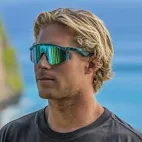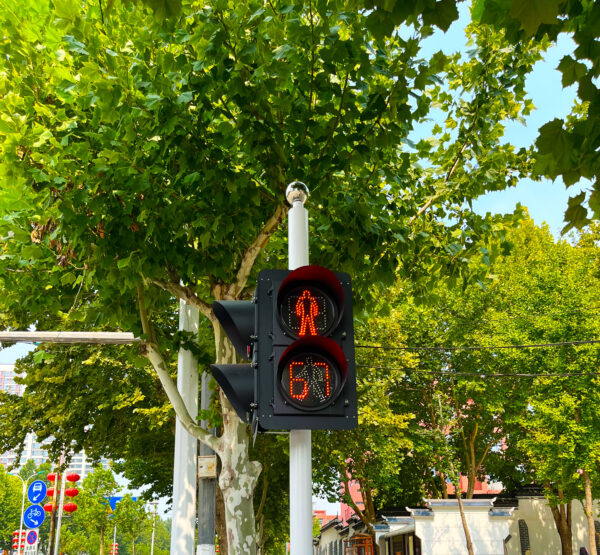How Cycling Sunglasses Protect Against UV and Dust
Home » How Cycling Sunglasses Protect Against UV and Dust
RECENT POSTS
Share:
- August 20, 2025
Table of Contents
Cyclists are frequently exposed to intense sunlight and airborne particles, both of which can impair vision and cause long-term eye strain. Modern cycling sunglasses supplier integrate advanced lens technology, coatings, and frame designs to effectively protect the eyes from UV radiation and dust.
Cyclists are frequently exposed to intense sunlight and airborne particles, both of which can impair vision and cause long-term eye strain. Cycling sunglasses have evolved to provide more than just basic protection—they combine advanced lens technology, coatings, and frame design to shield eyes from ultraviolet radiation and dust accumulation effectively. In addition, modern lenses now incorporate features that adapt to changing light conditions, reduce glare from reflective surfaces, and maintain clarity in dusty or windy environments, ensuring optimal visual performance on long ride.

Ⅰ. Advanced UV Protection
- Multi-Layer UV Filtering
Modern lenses incorporate multi-layer UV filters that block 99–100% of UVA and UVB rays. Unlike standard sunglasses, these layers are integrated into the lens material rather than just surface coatings, preventing UV degradation over time.
- HEV and Blue Light Management
In addition to UV protection, lenses now filter high-energy visible (HEV) light to reduce eye fatigue and prevent retinal damage. Cyclists in urban areas benefit from 30–40% lower HEV exposure, which complements UV shielding and enhances comfort on long rides.
Ⅱ. Dust and Particle Resistance
- Aerodynamic Lens and Frame Design
Frames and lenses are now shaped to minimize airflow toward the eyes, creating an aerodynamic barrier that deflects dust and fine particles. Micro-vent channels allow air circulation without letting debris enter, reducing the risk of scratching or irritation.
- Nano-Particle Repellent Coatings
Special nano-coatings prevent dust and tiny particles from adhering to the lens surface. Laboratory tests show up to 50% reduction in particle accumulation, maintaining clear vision and reducing cleaning frequency.
- Lens Curvature Optimization
The curvature of modern cycling lenses is designed to fit the face closely without touching the cheeks, which helps prevent wind-driven dust from reaching the eyes during rides at speeds up to 50 km/h.
Ⅲ. Environmental Adaptability
- Temperature-Resistant Materials
Lens and frame materials now adapt to temperature changes, maintaining fit and protective alignment in conditions ranging from -10°C to 45°C. This prevents warping that could create gaps allowing dust and UV rays to penetrate.
- Humidity and Fog Management
Advanced hydrophobic and anti-fog coatings ensure that sweat or moisture does not compromise dust or UV protection, keeping vision clear even during humid or rainy conditions.
Ⅳ. Lens Optical Coatings
- Anti-Reflective and Hydrophobic Layers
Lenses now include anti-reflective coatings to reduce glare from wet roads, while hydrophobic surfaces prevent dust and moisture from clinging. Some coatings are oleophobic, resisting oil from sweat that can attract particles. These features maintain clear vision over several hours of riding.
- Scratch Resistance
Advanced polymer layers enhance scratch resistance by up to 50%, extending lens life and maintaining protective performance.
Ⅴ. Long-Distance Ride Considerations
- Dust and Wind Management
Long-distance cyclists face challenges including wind speeds over 50 km/h and airborne sand or pollen. Lens curvature, frame geometry, and micro-vent designs work together to redirect airflow away from the eyes, preventing direct contact with dust while maintaining comfort and preventing fogging.
- Adjustable Fit
Modern sunglasses now feature adjustable nose pads and temple arms. Fine-tuning the fit reduces gaps between the face and frame, preventing dust intrusion from sides and top. Even small adjustments can reduce particle contact by 15–20%, especially on dusty trails or desert rides.
Ⅵ. Maintenance and Care
- Modular Lens Replacement
Some designs feature interchangeable lenses, allowing cyclists to replace or upgrade lenses with enhanced UV coatings or dust-repellent finishes. This ensures protective performance remains optimal without buying new frames.
- Practical Maintenance Tips
Cyclists should inspect lenses regularly and use soft microfiber cloths for cleaning. Avoiding harsh chemicals and storing sunglasses in protective cases prevents scratches, coating degradation, and dust accumulation. Proper care ensures the sunglasses maintain optimal protective performance over years of use.
Conclusion
Modern cycling sunglasses combine multi-layer UV filters, HEV light management, aerodynamic designs, nano-coatings, adaptive materials, and modular lenses. These innovations reduce eye strain, repel dust, manage UV exposure, and enhance clarity in diverse environmental conditions. By adopting advanced protective technologies, following proper maintenance routines, and choosing reliable cycling sunglasses supplier, cyclists can enjoy long, safe, and comfortable rides without compromising their riding experience.
0


